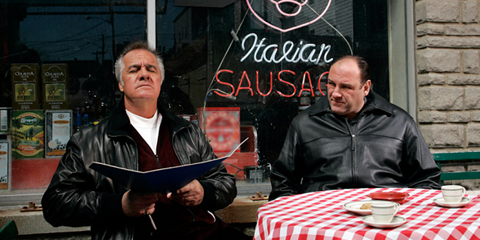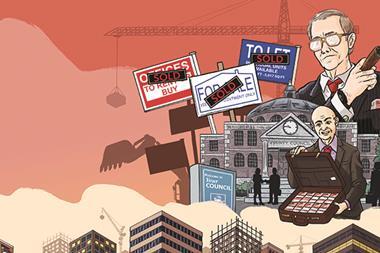“Buy land, AJ,” mobster Tony Soprano counselled his son a decade ago, “cos God ain’t making any more of it.” Now Brian Aldridge, the godfather of Ambridge, is following suit.

Of course, The Archers and The Sopranos differ enormously.
One’s the chronicle of an all-powerful family dynasty, scarred by violence, infidelity, liquor scams, feuds and unfathomable wickedness; the other’s set in New Jersey.
Soap opera writers down the ages, however, seem to have shared a habit of jumping on the property bandwagon near the end of bull runs.
As the apocalyptic finale of the HBO saga loomed in 2006, Tony and wife Carmela embarked on a spot of speculation… just before the US housing market took a bullet.

Fast-forward 10 years to fictional Borsetshire. Brian’s got a land deal in his sights. Borchester Land, of which he is a director, wants to sell 337 acres. Justin, the chairman, “wants us to bid for it privately… so it never goes on the market”, Brian tells his wife, Jennifer. Brian’s sister-in-law, Lilian, is discreetly consorting with Justin. Sounds as smelly as the Grundys’ cowshed.
Soap opera writers may be better at calling the turn than equity analysts, who jump the gun far too early or remain in denial after the event. It takes up to two years to go from reflecting media hubris about housing to getting it on to screen or Radio 4. By then, interest rates, affordability, tax changes and political turmoil have usually changed the landscape, but not before the Square Mile’s Cassandras start sticking their necks out prematurely.
On that basis, is Brian calling the top? The latest trading statements and results from housebuilders have suggested it’s not all plain sailing. Volume growth is pedestrian and they appear to be nearing the top of the margin cycle.
Avarice in Ambridge
That’s not bothering the squire of Home Farm, who is looking to fork out £1m of his own money on top of a loan of £1.7m: “With interest rates as low as they are, it’s perfectly doable, Jenny.” Has Brian seen what’s been happening to the long end of the yield curve? Or, indeed, considered what might happen to farmland values once we leave the Common Agricultural Policy?
But irrespective of quoted builders pulling in their horns, he’s clearly not forking out close to £3m merely to graze Herefords and generate similarly bovine returns on his investment.
No, Brian has surely got housing in mind. A back-of-a-fag packet calculation indicates how lucrative a change of use could be: 136 ha in new money, at 30 homes per ha (according to the South Worcestershire Development Plan), at an average price of £452,335 (Zoopla’s estimate for Cutnall Green, the village considered to most resemble Ambridge).
Take off, let’s say, 20% for infrastructure and section 106 commitments and apply a gross margin of 20% and that comes to… £295m. (I asked Savills to run the numbers independently and the ever-helpful residential research team came up with £245m).
The only obstacle is the planning system. Mind you, Tony Soprano had his methods when dealing with a recalcitrant building control officer. If a new Range Rover on the drive of a local planning chief were not to work, Brian could turn to Borchester Land’s psychotic enforcer, Rob Titchener, a man so odious that even the vicar is abandoning his quest to redeem the man’s rancid soul.
I can envisage Borsetshire’s planning officer cowering in front of Titchener: “I’m gonna make you an offer you can’t refuse!” Ooh aarh…






























No comments yet